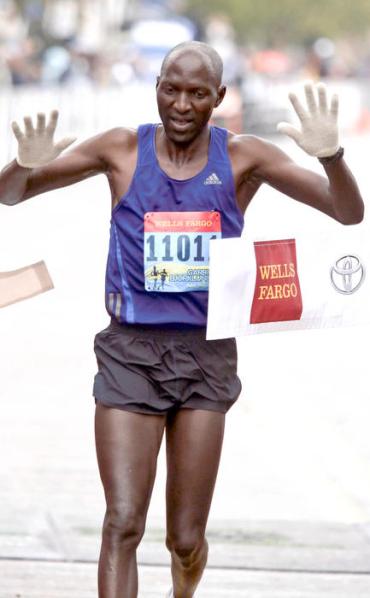When Pete and I sat down after the USA Half Marathon Championships in January our main takeaway was that I needed to be more of a racer. I spent much of that day in Houston checking my splits and conservatively working my way through the race. It was my first crack at the half marathon distance and I decided not to be overly risky. Yes, I was able to get my 2016 Olympic Trials qualifier but I left with a bad taste in my mouth, both from my finishing time and at how I ran the race.
On the most basic level, running is about racing. Who beat who? What place did you finish? Did you win the race? Usualy, no one asks the Olympic gold medalist what his time was in the race; the fact that he won makes the rest largely irrelevant. With that in mind, I made my way to Duluth, MN last weekend for the Gary Bjorkland Half Marathon. As I have spoken about many times lately, my Spring season was altered slightly due to my ferritin getting very low and this race was another chance for me to see if my body was truly getting back to normal.
With no racing or workouts for almost 6 weeks, then only 5 or so solid workouts and one prep race (Litchfield), I was unsure of what the half would hold for me. Despite all of that, I decided that my plan was to simply race. I decided to wear my watch and take splits, but I would not look at them until after I had crossed the finish line. And I decided that no matter how fast the first few miles were, I would be in the top group.
Under heavy fog, a light spitting rain, and unseasonably cool 48 degree temperatures, the gun went off and I surprisingly led the field to a pedestrian 4:59 opening mile. We hit two miles and the clock on the pace truck read 9:55. The race had opened a lot slower than I thought but I really didn’t care. I ended up leading almost every step through 10k with Ricky Flynn of GTC-Elite close by. I was comfortable up front and was simply trying to stay relaxed. I surged a bit on the slight uphills and downhills as I settled in, ready to race the 8 or so men around me.
Shortly after 10k, eventual winner Julius Koskei of Kenya, made a strong move and gapped the field. Looking back, I should have pursued him immediately but no one else went with him so I relaxed and decided to stay with the pack and pursue him with the group. I saw the 10k split of 30:22 but I still didn’t know what each individual mile split had been. I continued to lead for another mile or so and then Tim Young and Fernando Cabada took over the pace. I fell back a bit between 8 and 9 but reattached myself to the group before 10. However by mile 10, Young was safely in 2nd place but Cabada, Matthew Williams, and myself were still tightly packed a few seconds behind. Up until almost 12 miles I still had my eyes set on Young in 2nd place and thought I had enough to go get him. Unfortunately, by 12.5 miles I was slowing down and I dropped back to 5th place where I would finish in 1:04:30.
My finishing time was a slight PR but I wasn’t too concerned with that. I had competed well and although I was disappointed that I had not finished in 2nd place(or 3rd or 4th), it was a good race. And with the exception of the clocks displayed at various checkpoints on the course, I did not look at my watch one time and it was very freeing. Yes, I fell apart a bit the last mile or so but I was proud that I had been assertive and unafraid during the race.
Race winner Julius Kosgei of Kenya.
Greg Popovich, coach of the San Antonio Spurs, was talking to his team during a timeout at this year’s NBA finals versus the Miami Heat when he said the following:
“We don’t win quickly. That’s not what this is about. We unpack our bags and stay awhile. It takes time.”
Popovich’s team had just jumped out to an early lead and his message was to stay patient and realize that although the opening moments of the game had gone well the journey was far from over. With Pop at the helm, the Spurs have been a shining example of a steady, consistent, and process driven organization that understands that deviation from the system and plan is not an option.
I believe this sentiment is incredibly applicable to distance running. Each day, week, month, and year connect to create the full picture of a runner’s identity. This is how I try to approach my career at ZAP. Saturday’s race gave me many positives and also many things to build on. So here I am, unpacked and ready to stay awhile as I learn and grow in the sport.
Here is my last week of training(6/15-6/21):
Sunday: AM: 17 miles
Monday: AM: 7 miles
Tuesday: AM: 12 miles (1-2-3-2-1×2 fartlek) PM: 4 miles treadmill
Wednesday: AM: 7 miles PM: 5 miles
Thursday: AM: 10 miles (5×200 post run) PM: travel to Duluth, MN
Friday: AM: 8 miles (4×200 post run)
Saturday: AM: 18 miles (Gary Bjorkland Half, 1:04:30, 5th place)
Total: 88 miles, 9 runs
